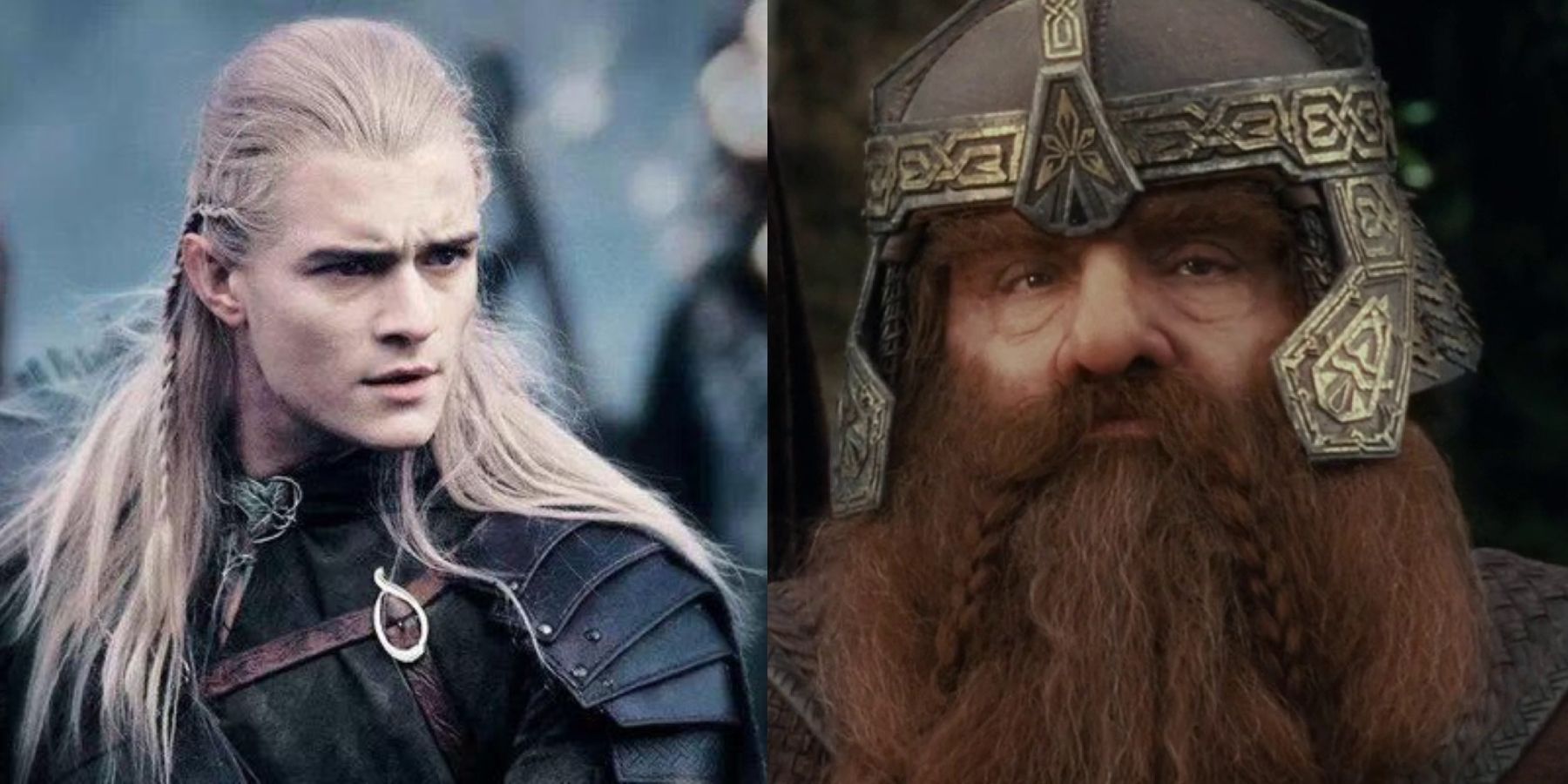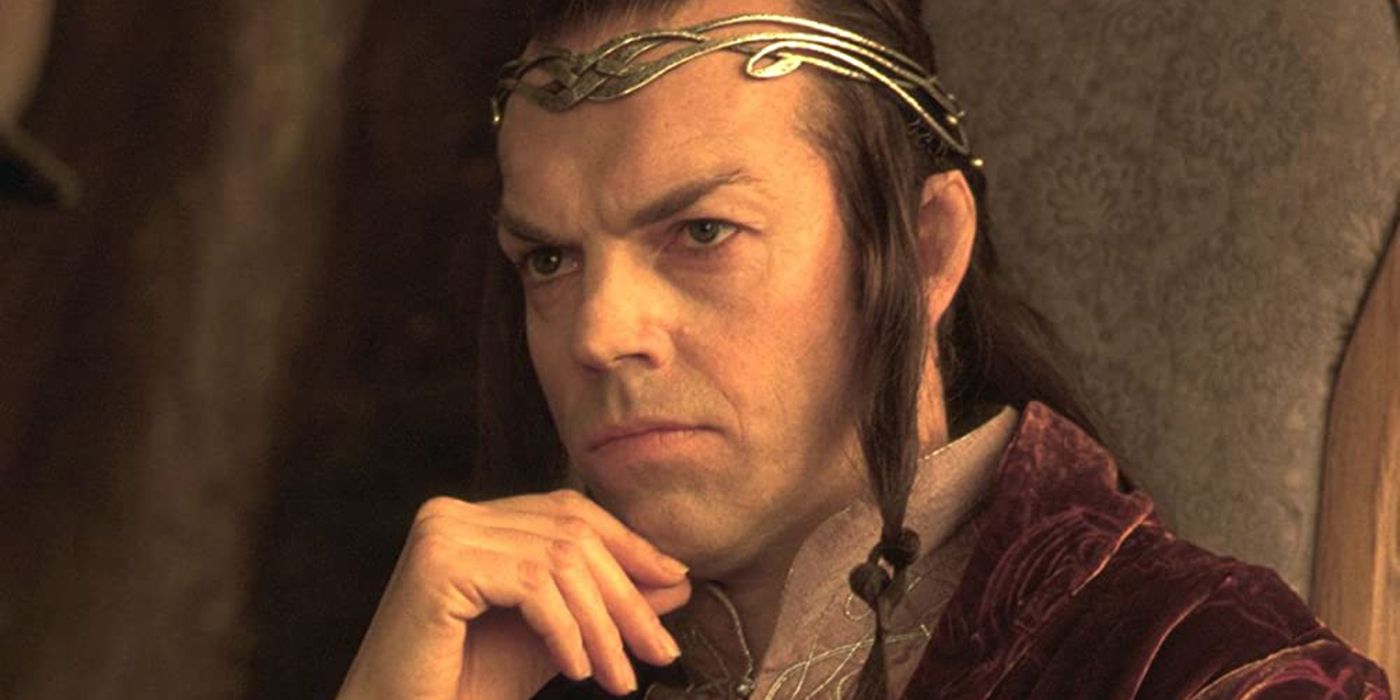The Lord of the Rings films, adapted by Peter Jackson from the books of the same name, are some of the most famous works of J.R.R.Tolkien. The books, permeated with all manner of remarkable creatures, from Barrow- Wights to Nazgul, to elves, dwarves and hobbits, introduce us to a rich and diverse world full of wonders. But how do these creatures, arguably most notably of all the elves, change between the books and films?
The films and the books share two main things in common in their portrayal of the race of elves: Their regal and supercilious nature, which comes from their long life, and their descendants from the most noble bloodlines of the Numenorians, and their power, which comes from their strength of wit, their love of literature and poetry, and their connections to the three elven rings forged by Celebrimbor in the Second Age. One way in which the portrayal of the Elves differs from the books to the films though, is in their light-heartedness, their kindness to other living creatures, and their love for their kin.
All of these heart-felt and fun-loving traits are present in the book, in the form of three of the main elven characters who appear throughout the story: Elrond, Legolas, and Galadriel. When the hobbits first arrive in Rivendell, to attend the Council of Elrond and decide the fate of the One Ring, which is tied to the fate of Sauron, there is of course a sense of foreboding. With such a grave matter at hand, the elves in the scene in the film are shown to be serious, discussing strategy and the growing darkness that is befalling Middle Earth. What the film misses out, however, is the joy and the merriment with which the hobbits are met upon entering Rivendell, the music and the songs in the great hall of fire, in which the elves are described by Samwise as "merry as children," "smiling and applauding" at Bilbo’s poetry. This is a side to the elves seldom seen in the films.
Elves Actually Do Like to Drink
Indeed, this merriment and joy is something actively overlooked in the Return of the King, when Gimli and Legolas celebrate at the hall of the Rohirrim. Upholding the ancient rivalry between dwarves and elves, Gimli challenges Legolas to a drinking game, and not only does Legolas appear not to know what a game of this sort is, he then proceeds to drink several mugs of ale without a single smile, despite everyone around him laughing, toasting and making jokes about hairy dwarven women. He even looks worried as he feels a tingle in his fingers, saying "I think it’s affecting me" with furrowed brows. This goes against the portrayal of Elves in the book as enjoying a hearty drink in times of conviviality and festivity, which can be seen in the chapter "Farewell to Lorien," in which Galadriel "rose from the grass and taking a cup from one of her maidens, filled it with white mead."
Not only does this suggest that the elves are happy to drink, it also shows Galadriel as carefree enough to sit on the grass with the others, disillusioning the notion that she must always keep her heirs and graces, as she is shown to do loftily in the films. It could be argued that there is a kindness within her in Peter Jackson’s adaptations, due to the fact that she presents the fellowship with a plethora of gifts to help them along their journey to destroy the rings, but many examples of the kindness of elves, and the gentle affection that lies beneath their immortality and power, are missing from the screen adaptations.
The Elves' Compassion Is Lacking In The Movies
For example, at the Council of Elrond in the books, Legolas speaks of the escape of Gollum, formerly known as Smeagol, from an elven prison, where he was being held for safe-keeping to prevent him informing to or succumbing to the dark lord. The film portrays Gollum’s captivity as a torturous scene at the hands of the Nazgul, when in the book Legolas says that the elves "had not the heart to keep him in dungeons under the earth," believing that all living things should have access to the trees that grow and the air that breathes life. Even though Gollum had the ring for longer than Bilbo and Frodo combined, and could have posed them a huge threat, the elves treated him with compassion. This gentleness, this caring for Gollum as a sentient being, is omitted in Peter Jackson’s adaptations.
This can also be seen in the portrayal of the relationship between Elrond and Aragorn. In the films, a direct scene between the two characters is rare, but the audience is aware of the premise that Aragorn wishes for Arwen’s hand, loving her above all else, and that Elrond refuses to bless the union, wishing his daughter to journey with her people to the undying lands instead of giving up her immortality for the man she loves. The relationship between the two is full of animosity, with Elrond being shown as a noble yet stubborn elf, who disapproves of Aragorn and erases the vision of the child from the prophecy he shares with Arwen, for his own gain.
This is a change from the book, because although it is true that Elrond fears the suffering of his daughter, it is told in Appendix A, "The Tale of Aragorn and Arwen," that after his father’s death at the hands of an orc arrow when he was two, Aragorn was taken to dwell in the house of Elrond, and that "Elrond came to love him as a son of his own." There is no hint of this fatherly love in the films, another example of how the portrayal of elves changes between media.
Some may argue that these changes come from a limited amount of screen time, in which the creative team behind the Lord of the Rings films had to distill a life-long work of art into a shorter and more digestible format, stripping it back to the very essence of the story for its cinematic audience. Perhaps they will have more chances to explore the representation of elves in Amazon's Lord of the Rings Series.



